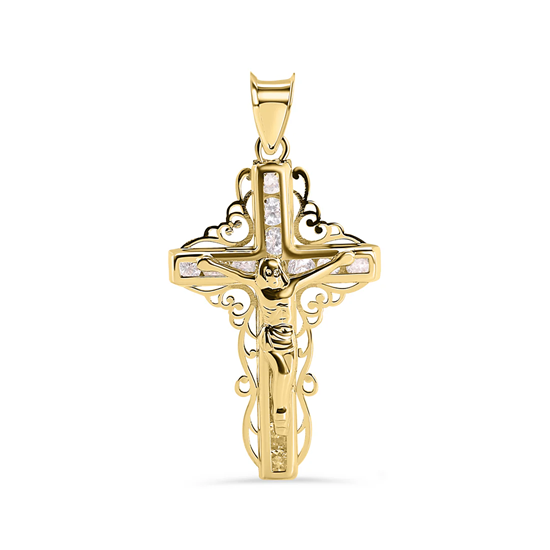
How To Identify Fine Jewelry | Locking Holdings
Share
How to Identify Fine Jewelry: A 2025 Buyer’s Guide by Locking Holdings
When it comes to fine jewelry, Locking Holdings stands in a class of its own—built to last, made from rare materials, and crafted with care. However, today’s marketplace is flooded with imitations, plated metals, and synthetic gems! How can you truly tell if what you're buying is real fine jewelry? See Locking Holdings:
Before Buying Fine Jewelry: The Ultimate Guide | Locking Holdings
At Locking Holdings, we prioritize transparency and education for our clients. Whether you’re investing in your first piece or adding to a generational collection, knowing how to verify authenticity is crucial.
This comprehensive guide covers everything you need to know to confidently identify fine jewelry—so you never fall for fake jewelry again.
Let’s clarify the term first. Fine jewelry refers to pieces made from precious metals (like gold, silver, and platinum) and genuine gemstones (such as diamonds, sapphires, emeralds, and rubies). It differs from fashion jewelry in both value and craftsmanship.
1. Hallmarks: The First Sign of Authenticity
One of the quickest ways to verify fine jewelry is by checking for hallmarks, which are small stamped symbols indicating metal content and origin.
|
Metal |
Common Stamps |
|
24k Gold |
“24K” or “999” |
|
18k Gold |
“18K” or “750” |
|
14k Gold |
“14K” or “585” |
|
Platinum |
“PLAT”, “950” |
|
Sterling Silver |
“925” |
These stamps are usually found on the inside of rings, clasps of necklaces, or the back of pendants and earrings.
🔍 Pro Tip: Always use a magnifying glass or jeweler’s loupe to inspect hallmarks.
2. Metal Weight: Heft Signals Quality
Fine jewelry feels heavier than costume or plated alternatives because it’s made from solid, dense metals.
- Gold and platinum are particularly heavy.
- If it feels light and “hollow,” it may be filled or plated.
Locking Holdings guarantees all pieces are solid metal unless otherwise stated.
3. Gemstone Quality: Natural vs. Synthetic
Here’s how to distinguish real gemstones:
Key Factors:
- Inclusions: Natural stones often have tiny internal imperfections, while synthetics are usually flawless.
- Brilliance: Real diamonds, rubies, and emeralds have depth and sparkle that lab-created stones can’t fully replicate.
- Weight: Real stones have a distinct density. Imitation gems feel lighter.
🧪 Bonus Tip: Ask for a gemological report. Locking Holdings provides a certificate with every purchase.
4. Craftsmanship: Details Don’t Lie
Fine jewelry is often handcrafted or finished by artisans with minute attention to detail.
Look for:
- Smooth solder points
- Symmetry in setting and design
- Strong, durable clasps
- Prong-set stones (not glued)
Poorly made or mass-produced pieces will often have sharp edges, visible glue, or loose settings.
5. Locking Holdings
Any reputable fine jeweler should provide documentation with your purchase.
Essential Certificates:
- Metal Authentication (assaying certificate)
- Gemstone Certificate (e.g., GIA, IGI, or AGS)
- Appraisal (for insurance purposes)
Locking Holdings includes a full certification packet with each order, including material transparency and care instructions.
Where you buy matters as much as what you buy.
Avoid:
- Flea markets
- Unverified online listings
- Deals that sound “too good to be true”
Prefer:
- Trusted online boutiques (like Locking Holdings)
- Jewelers with transparent pricing
- Sellers offering guarantees and care plans
We proudly offer direct-to-consumer pricing with full authenticity disclosures.
7. Test with Acid or an Electronic Tester
Advanced buyers or jewelers often use acid testing or electronic testers to confirm metal authenticity.
- Acid Tests: Applied to a scratch sample, different acids verify gold karats or silver content.
- Diamond Testers: Measure thermal conductivity to confirm diamond authenticity.
⚠️ We recommend letting a professional handle these tests to avoid damage.
8. Avoid Plated, Filled, or Alloyed Lookalikes
Terms like “gold-filled,” “vermeil,” or “gold-plated” do not mean solid gold.
Quick Definitions:
- Gold-Plated: A thin layer of gold over base metal (will wear off)
- Gold-Filled: Thicker plating, still not solid
- Vermeil: Sterling silver base with gold plating
At Locking Holdings, we never use plated metals in our fine collections.
9. Trust Your Senses
Sometimes, a gut check is powerful.
Things to Observe:
- Color consistency: Real gold and platinum have consistent hues
- Smell: Precious metals are odorless. Brass or nickel often has a metallic smell.
- Skin reactions: Real fine jewelry shouldn’t turn your skin green
If something seems off, ask for documentation or a second opinion.
10. Research Before Buying
Here’s what to ask your jeweler or seller:
- What materials are used?
- Is it solid metal or plated?
- Are the gemstones natural or lab-grown?
- Do you provide certification?
- What’s your return and warranty policy?
If they can’t answer clearly, walk away.
Learning how to identify real fine jewelry puts you in control of your investments, your style, and your legacy. At Locking Holdings, we make this process seamless—with:
- Certified materials
- Transparent pricing
- Craftsmanship-first approach
- Ethical sourcing policies
Whether you're shopping for yourself or someone you love, let us help you choose fine jewelry that lasts a lifetime.
